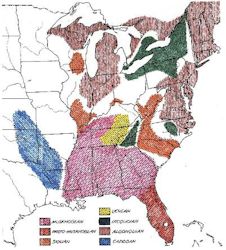The Keyauwee Indians
The name of the Keyauwee has no connection with that of Kecowee town of the Cherokee on Keowee River, in western South Carolina, nor apparently with that of Kiawah Island, south of Charleston. Of their language nothing remains, but the evidence of alliance and history goes to show that they were Siouan. They were never prominent as a separate tribe. In 1701 Lawson found them in a palisaded village about 5 miles beyond “Heighwaree” (Uharie) river, and near another stream which was probably Deep river. The village was about 30 miles northeast of the Yadkin, and must have been about … Read more

